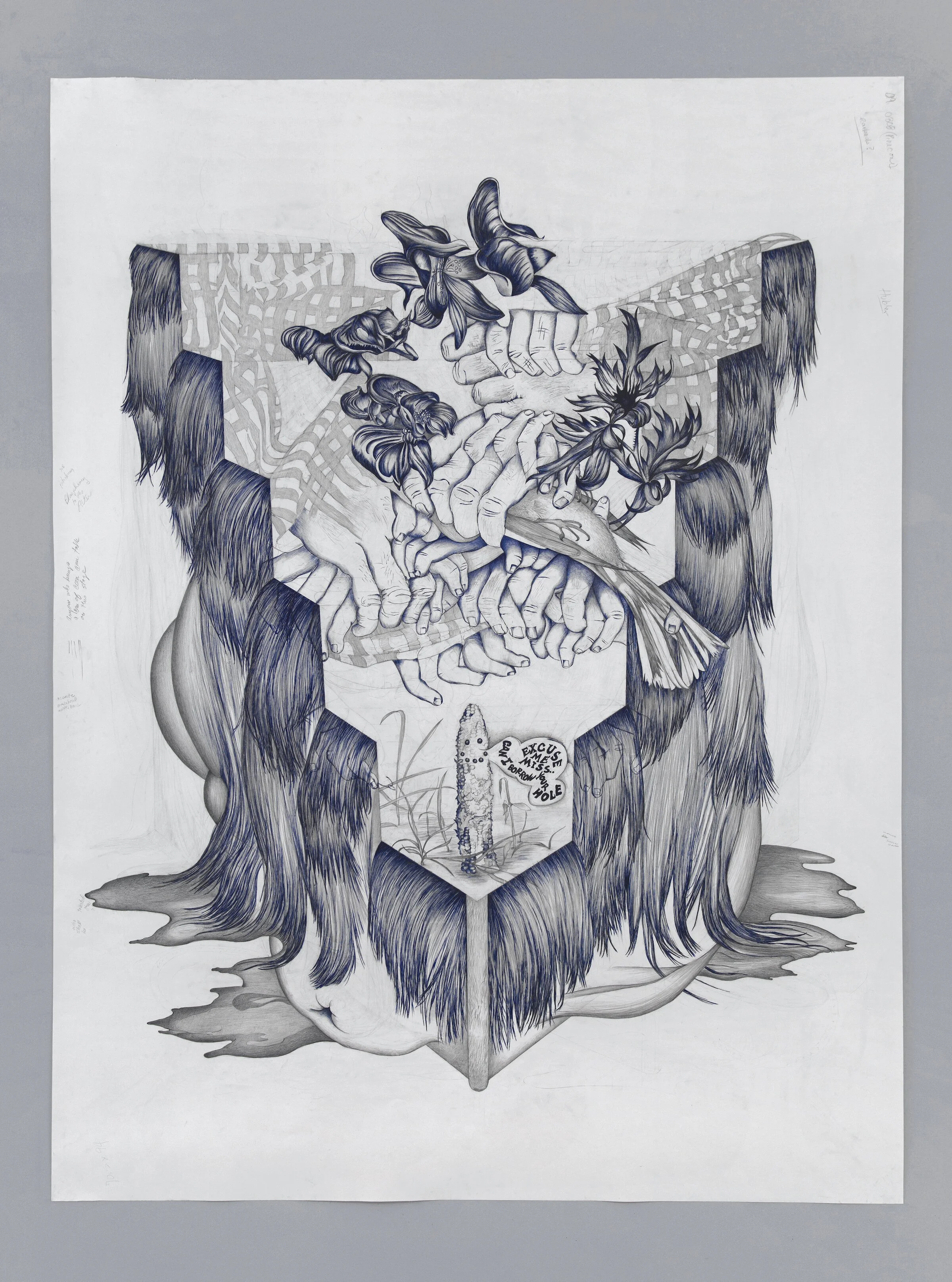Marlene McCarty, Anabolic Steroids, Corn Cob...
by Russell Facemire
Marlene McCarty, Marlene McCarty, Anabolic Steroids, Corn Cob, Privy, Sculptural Disintegration, Free Catheter with Intermittent Liberator, Monkshood, Mockingbird, Gingham and Arthritis, 2019, graphite and ink on paper. 94 x 70.5”. Courtesy UB Arts Collaboratory.
Marlene McCarty’s exhibition Into the Weeds at UB Art Gallery, Center for the Arts contains eight ballpoint pen and graphite drawings, fifteen species of plants, and a dramatic change to the layout of the space: the audience must first pass through a newly built drywall entryway and traverse a hall lined on one side with weeds in planters lit by an ultraviolet glow before finally arriving into the rotunda, where a variety of plants (all labeled by species and their status as “poisonous”) grow in a circular steel enclosure. It is on the return trip from this garden that we first notice the drawings, Anabolic Steroids (2019) and its compatriots, hidden by the newly built drywall panels on which they’re mounted.
Various plants and waves of grass (or hair) sprout up from the bottom of the paper, and at the center, an anthropomorphized corncob requests permission to borrow the hole of a certain “Miss.” An upside-down pyramid, the strongest of the composition's geometric forms, fails to contain a spill of disembodied hands, warped check patterns, and other grotesqueries. Much like the weed-infested buildings of Buffalo’s Silo City (which partially inspired McCarty’s work) the architecture found in Anabolic Steroids becomes part of the fertile miasma. Even the title–more a list or incantatory spell–upsets the expectations of form and of hierarchy: any singular element drowns in the sumptuousness of the objects listed.
Together, these works address power: specifically, power exerted, power contained, and, above all, power suppressed. How we think about the body (particularly the feminine body) is determined by the structures–societal, architectural, historical– we force it into. The stability of these structures in McCarty’s drawings is threatened from within by the fecund force of the bodies they attempt to hold back. In McCarty’s view, the weeds always grow higher than the garden.

